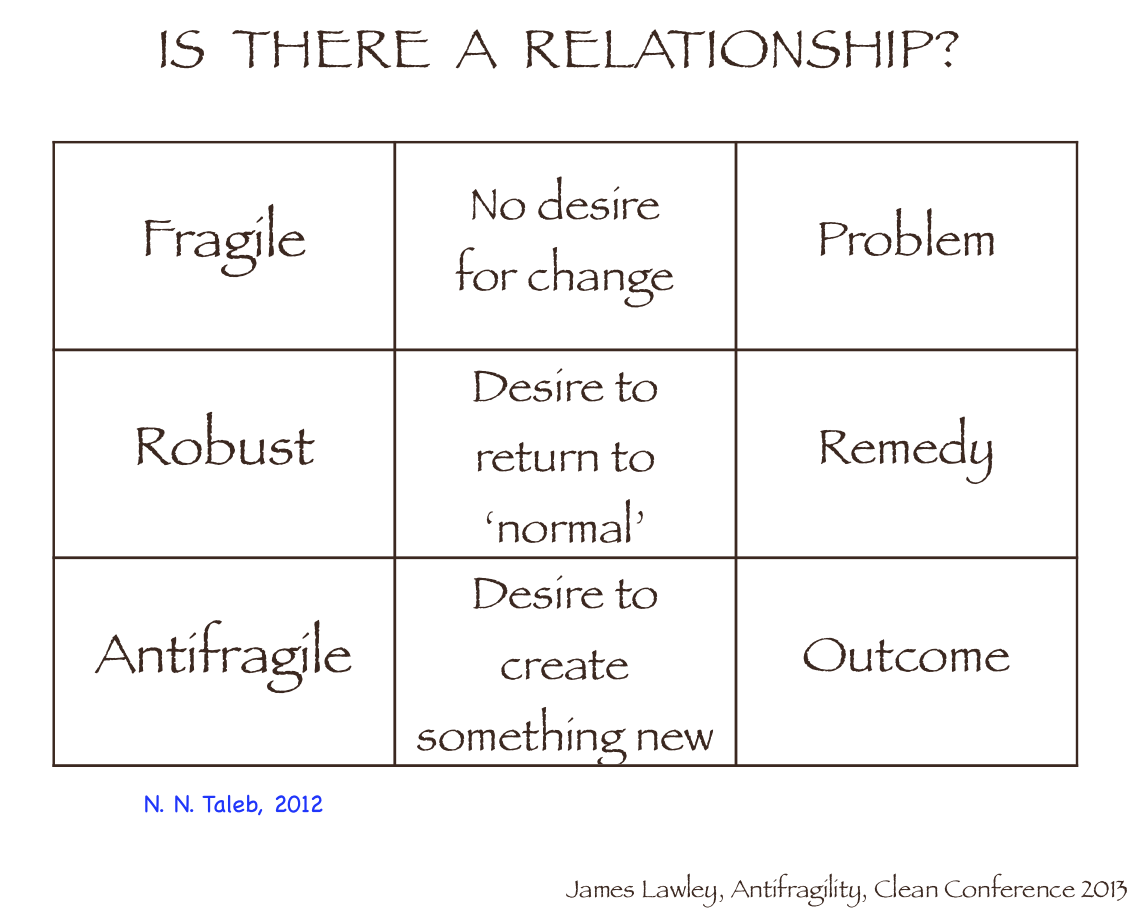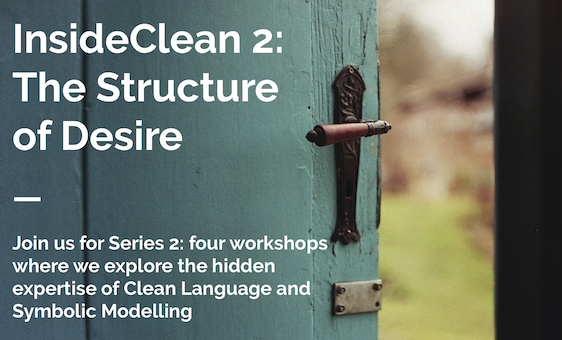“Penny and James, how long did you work on developing the P.R.O. model? It looks deceptively easy but has so many facets. I’m on my nth iteration of learning P.R.O. and remain hopeful to crack the formula one day
Doris Leibold’s question stimulated us to search through our digital archives and walk down memory lane. It was fascinating to look back at the journey we have taken. Following is the history of the evolution of the Problem-Remedy-Outcome (PRO) model with explanatory diagrams created at the time.
1996 – We first presented our ideas on ‘Problem, Solution, Outcome Thinking in Organisations’ during business trainings (without any Clean Language). The definitions were largely based on the work of Robert Fritz (The Path of Least Resistance, 1989). in the following 24 years our thinking about this topic has developed and yet these basic ideas still influence us today.
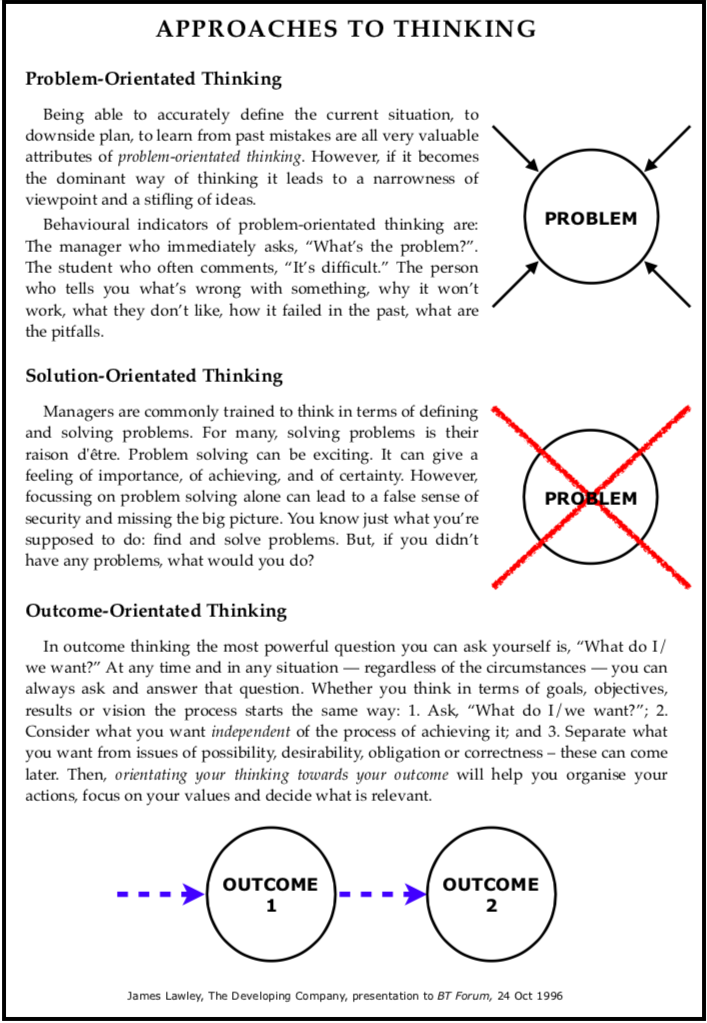
2001 – While in France we were training ‘How to cleanly work with outcomes’. During a small-group activity we noticed several particpants in the client role were in tears or visibly upset. We wondered, “What on earth is going on here? We told them to develop a desired outcome!”. We checked that the facilitators had asked, ‘And what would you like to have happen?’ and used Clean Language questions … and that’s when we had an ah-ha moment.
We checked how the facilitators were responding to the client’s answers and we realised two things: (a) they were not attending to the client information in the same way we did; and (b) they were not asking questions to invite their client to stay with their desired outcome. And guess what, sooner or later the clients ended up deeply unresourced in a problem state.
2002 – To figure out how we modelled and responded to clients’ information, we took a bunch of our coaching and therapy transcripts and self-modelled the way we facilitated. We called the result the PSO (Problem-Solution-Outcome) model. It identified the precise client language stuctures which distinguished the three categories. It also provided the relevant Clean Language questions needed to invite the client to attend, or continue to attend, to a desired Outcome of their choosing. Here is our first flowchart of the model:
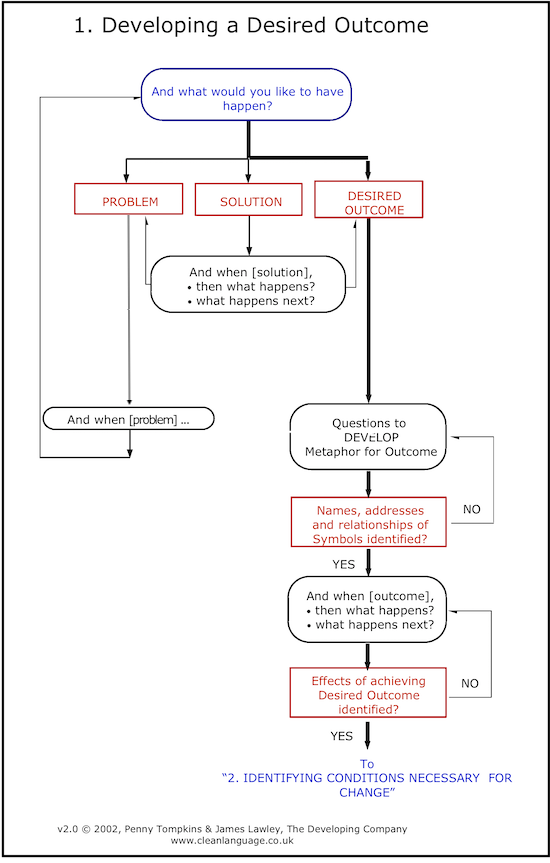
Once we had come up with the PSO model, discussions with Phil Swallow and Wendy Sullivan helped us refine it. For example, they helped us see that the model’s primary metaphor is ‘adding to [Outcomes], or reducing [Remedies], what already exists world’. Here is a simpler, more attractive version of the model drawn on a flip chart by Phil at the time:
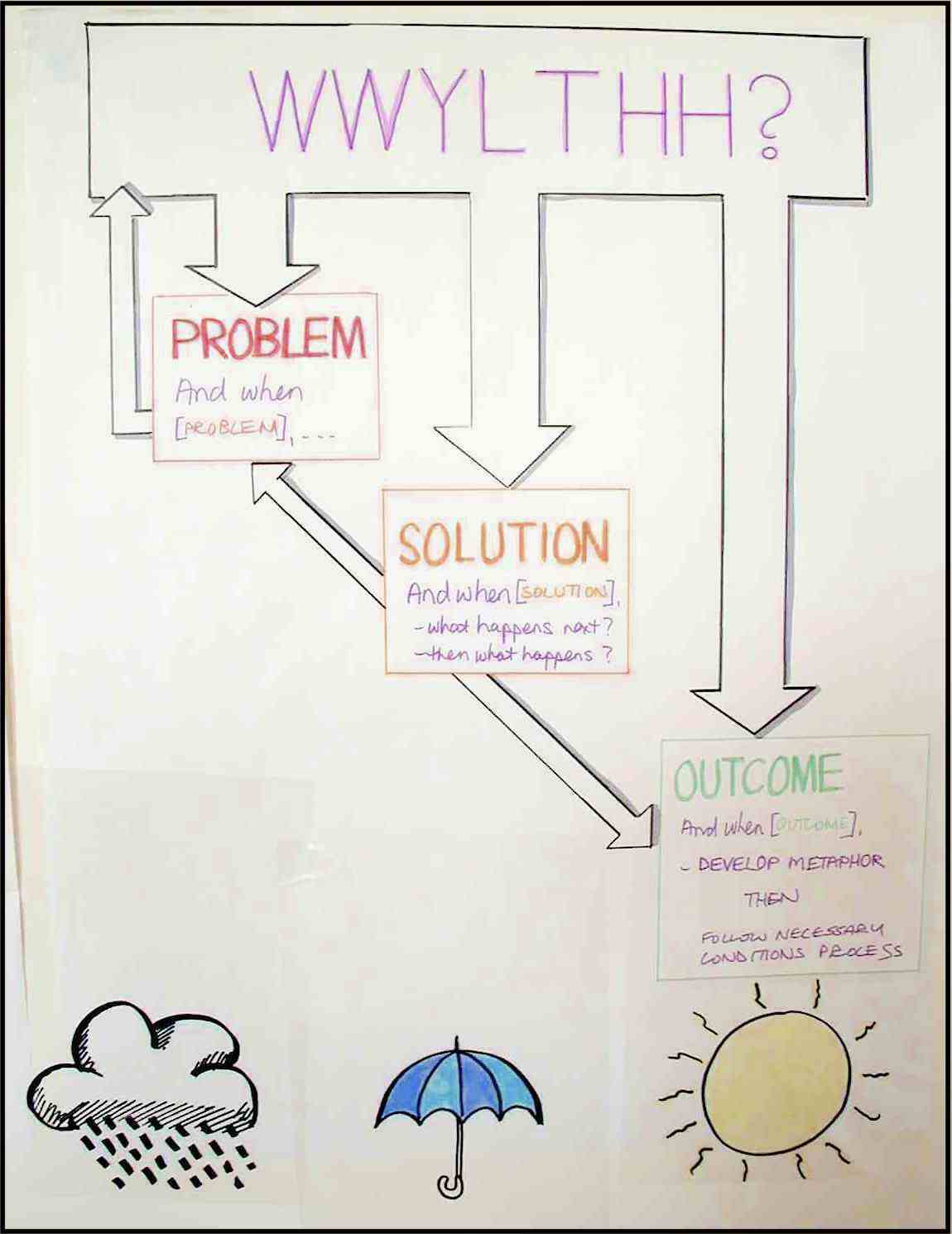
We also integrated the model into our ‘A Framework for Change’ coaching process which we were developing at the time (shown in the following diagram). A comprehensive description of the final 2010 version of this model is available in the article A Clean Framework for Change.
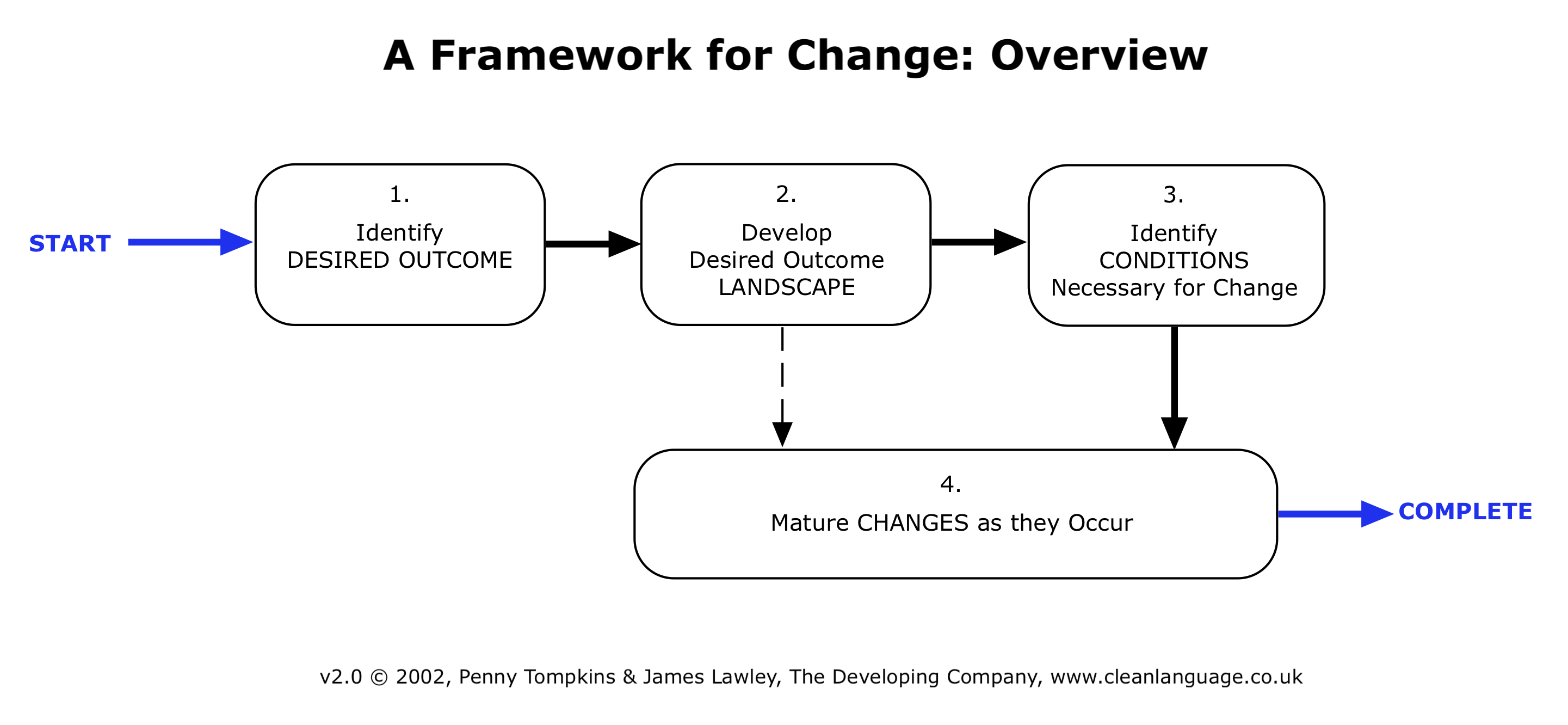
2004 – In training the PSO model we realised many people’s predetermined ideas of what ‘solution’ meant prevented them modelling the client’s information in the way we did. So we decided to change ’Solution’ to ‘(proposed) Remedy’ to make the distinction easier to grasp – and the Problem-Remedy-Outcome (PRO) model was born.
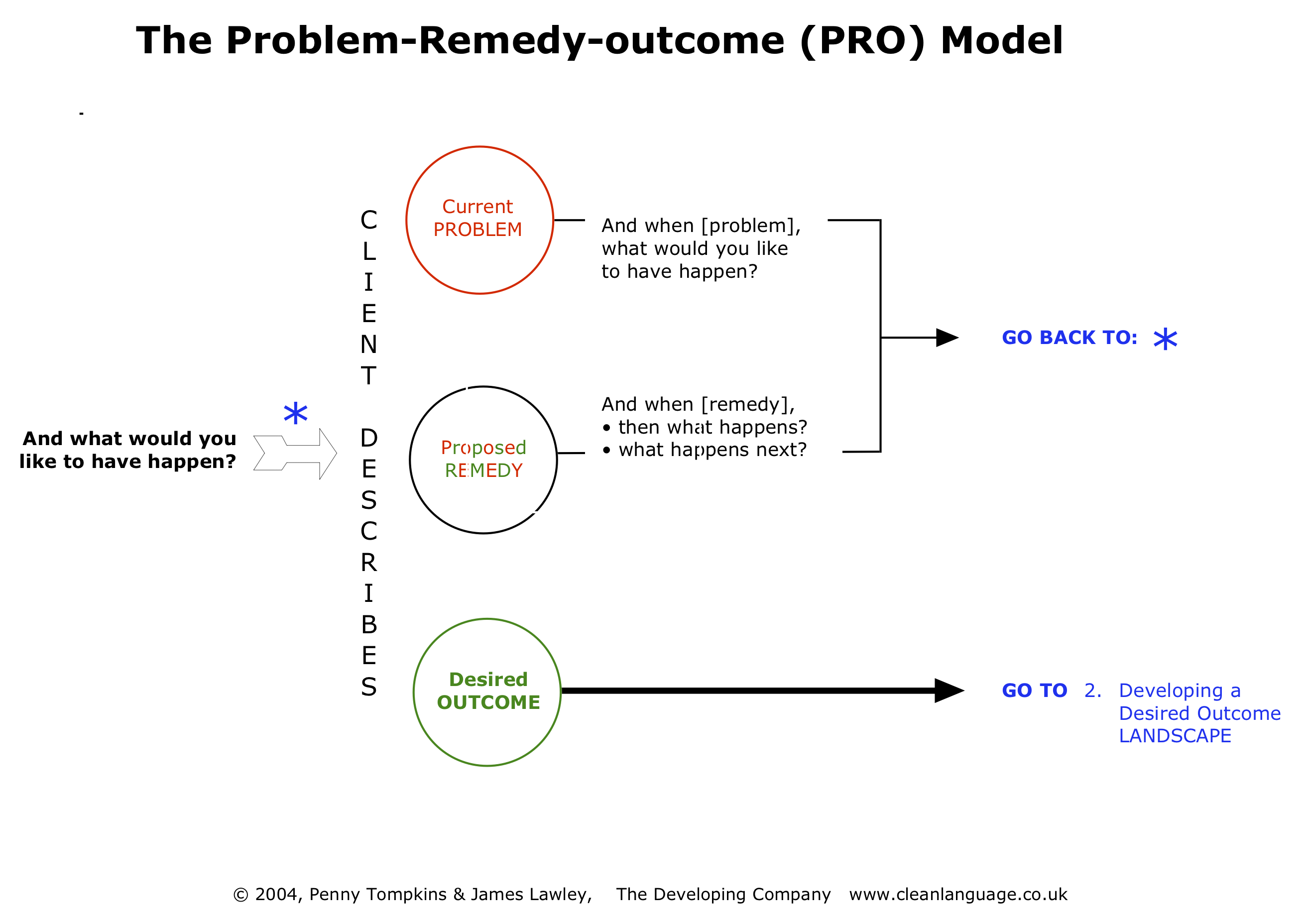
2006 – We published the article Coaching for P.R.O.’s in Coach the Coach magazine.
2007 – PRO covers three key categories of experience and clearly there are more than three. We extended PRO into REPRO (Resource, Explanation, Problem, Remedy, desired Outcome). The complicated diagram that follows was first unveiled on an advanced module for The Clean Change Company. It attempts to integrate A Framework for Change and the 7 Approaches (i.e. the ‘6 Approaches’ from Metaphors in Mind plus ‘adjacency’ – see the article Proximity and Meaning).
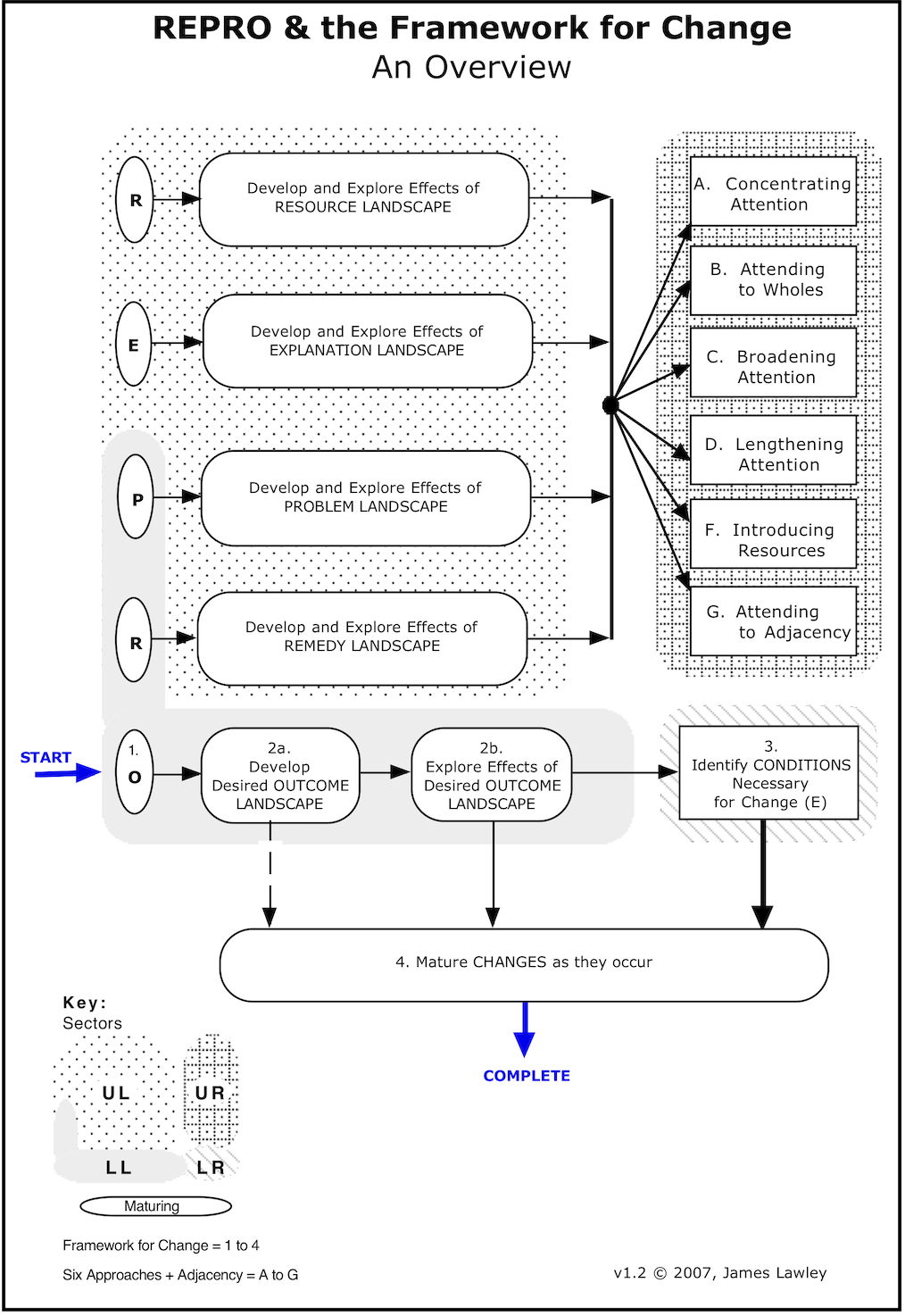
2010 – Eventually REPRO grew into REPROCess. We added ‘Change’ as a separate category (and the ‘ess’ so we had a word that made sense!). We claim these are six of the most common types of description, not only used by clients, but by everyone.
2011 – An opportunity to write a chapter for a book on innovative methods prompted us to review the Frameworks. We made a major revision and created Symbolic Modelling Lite (which of course still includes the PRO model). This continues to form the basis for our way of working today and you can download the chapter at: Symbolic Modelling: Emergent change though metaphor and Clean Language.
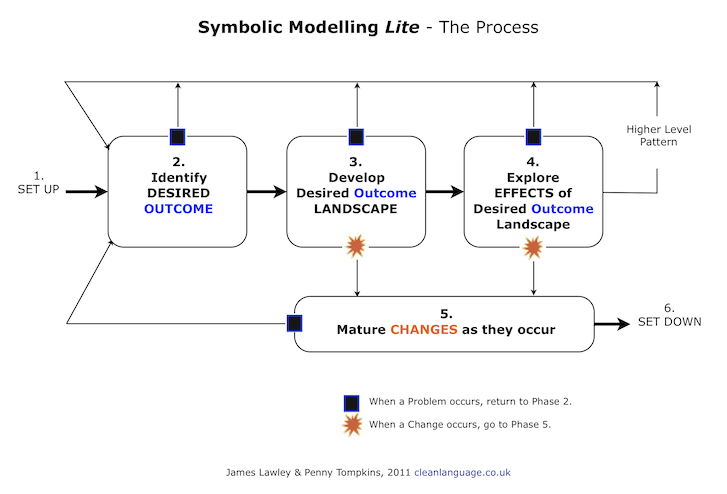
2012 – We published the extended model under the title, REPROCess: Modelling Attention. A recent summary follows:
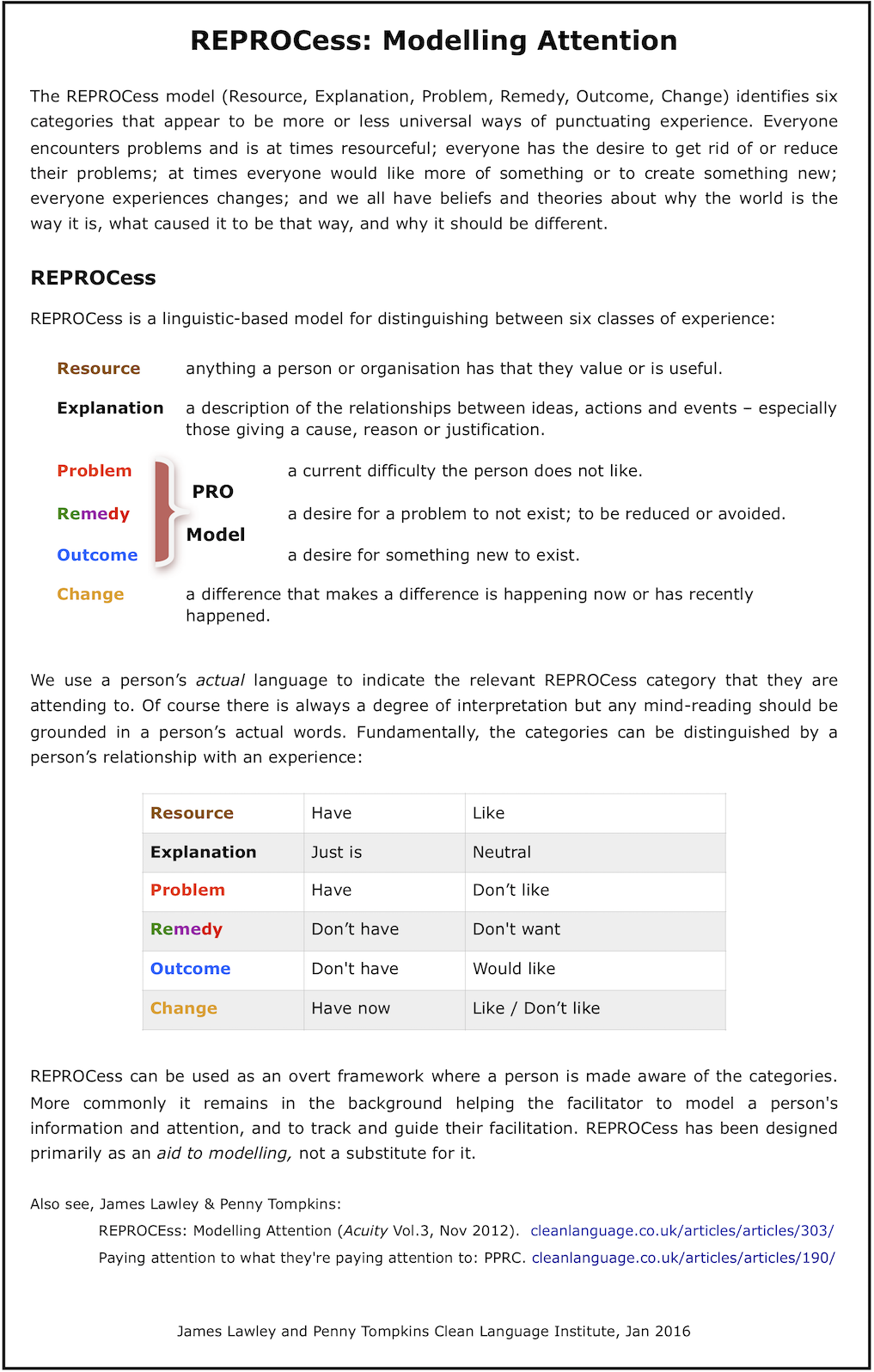
2020 – We have always acknowledged our debt to David Grove as the source of so much of what now constitutes Clean. Although David introduced us to ‘And what would you like to have happen?’, even during the periods when he asked this question, he seldom spent much time developing an outcome landscape. As you can see, we developed the above models in parallel with the processes David created in the last seven years of his life (he died in 2008) and we continue to refine these models to this day.
You can find out about our lastest thinking on Problems, Remedies, Outcomes and Resources on our online workshop, InsideClean Series 2: The structure of desire.
Postscript
Along the way, we proposed a relationship between PRO and Nassim Nicholas Taleb’s idea of Antifragility. Here is a slide from a 2013 conference presentation:
